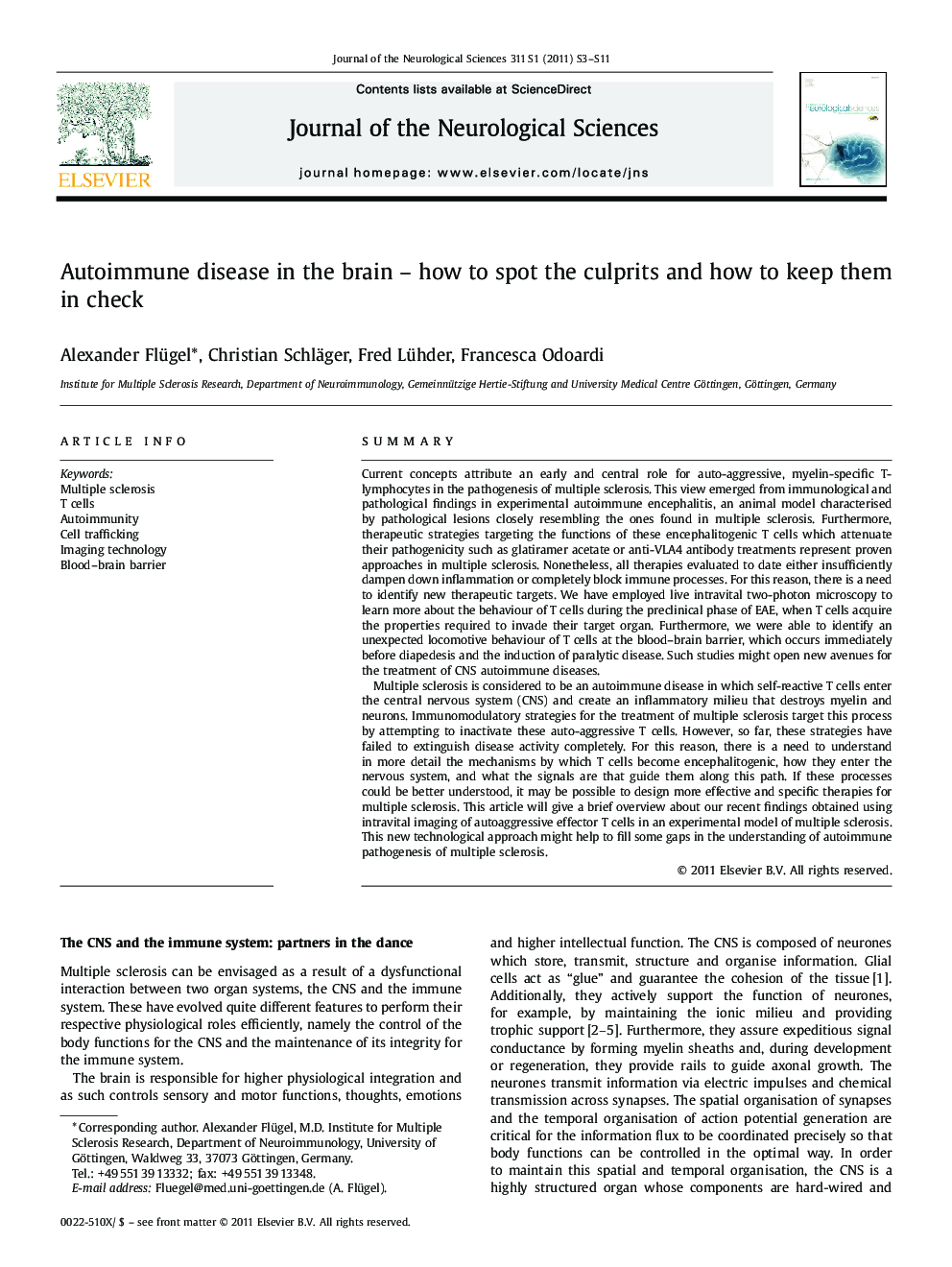| کد مقاله | کد نشریه | سال انتشار | مقاله انگلیسی | نسخه تمام متن |
|---|---|---|---|---|
| 1914126 | 1047262 | 2011 | 9 صفحه PDF | دانلود رایگان |

SummaryCurrent concepts attribute an early and central role for auto-aggressive, myelin-specific T-lymphocytes in the pathogenesis of multiple sclerosis. This view emerged from immunological and pathological findings in experimental autoimmune encephalitis, an animal model characterised by pathological lesions closely resembling the ones found in multiple sclerosis. Furthermore, therapeutic strategies targeting the functions of these encephalitogenic T cells which attenuate their pathogenicity such as glatiramer acetate or anti-VLA4 antibody treatments represent proven approaches in multiple sclerosis. Nonetheless, all therapies evaluated to date either insufficiently dampen down inflammation or completely block immune processes. For this reason, there is a need to identify new therapeutic targets. We have employed live intravital two-photon microscopy to learn more about the behaviour of T cells during the preclinical phase of EAE, when T cells acquire the properties required to invade their target organ. Furthermore, we were able to identify an unexpected locomotive behaviour of T cells at the blood–brain barrier, which occurs immediately before diapedesis and the induction of paralytic disease. Such studies might open new avenues for the treatment of CNS autoimmune diseases.Multiple sclerosis is considered to be an autoimmune disease in which self-reactive T cells enter the central nervous system (CNS) and create an inflammatory milieu that destroys myelin and neurons. Immunomodulatory strategies for the treatment of multiple sclerosis target this process by attempting to inactivate these auto-aggressive T cells. However, so far, these strategies have failed to extinguish disease activity completely. For this reason, there is a need to understand in more detail the mechanisms by which T cells become encephalitogenic, how they enter the nervous system, and what the signals are that guide them along this path. If these processes could be better understood, it may be possible to design more effective and specific therapies for multiple sclerosis. This article will give a brief overview about our recent findings obtained using intravital imaging of autoaggressive effector T cells in an experimental model of multiple sclerosis. This new technological approach might help to fill some gaps in the understanding of autoimmune pathogenesis of multiple sclerosis.
Journal: Journal of the Neurological Sciences - Volume 311, Supplement 1, December 2011, Pages S3–S11